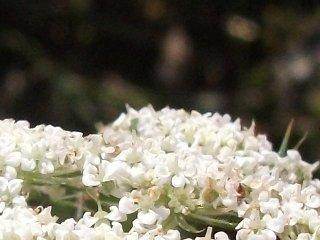
 4
4




 For some reason I thought that this meant that they would have more genetic diversity in them, not less. But it seems I may be mistaken about that.
For some reason I thought that this meant that they would have more genetic diversity in them, not less. But it seems I may be mistaken about that.





Don't let perfect be the enemy of good.

 4
4




Tracy wrote: I am thinking that any seeds I can get my hands on, as long as they’re not GMO, would be good to throw into the mix at the beginning of a landrace experiment.


 4
4





 3
3




 So, the term 'open pollinated' is a misnomer; but open pollinated seeds can still be useful in creating landraces. That's very good to know. Thanks, Joseph.
So, the term 'open pollinated' is a misnomer; but open pollinated seeds can still be useful in creating landraces. That's very good to know. Thanks, Joseph.




Joseph Lofthouse wrote:
I use any seed that's available to me when starting a seed-saving project: hybrid, open pollinated, heirloom, modern varieties, propagules from the grocery store or farmer's market. Sometimes I might get rambunctious and include wild relatives. There are some crops like beets, carrots, brassicas, and onions, in which the hybrids are made using male sterile plants. And that sterility is passed on through the mother, so all of it's descendants are also sterile. When I see plants that don't have anthers, or that don't produce pollen, I just chop them out. (At one time, 70% of my carrots were male sterile.)
 2
2








 2
2




Miranda Converse wrote:Ah so we are talking about plants that have both male and female flowers! I don't know why, I was thinking of plants that had only male flowers (I have no idea which do and which don't have both). Makes sense now!







 1
1




 1
1




Tracy Wandling wrote:
So, I guess my main question is, what type of seeds are the best to get if I want to create a landrace, and increase genetic diversity while selecting for certain traits such as taste, drought and frost tolerance, earliness, and whatever else I want? Or does it matter? I am thinking that any seeds I can get my hands on, as long as they’re not GMO, would be good to throw into the mix at the beginning of a landrace experiment. But perhaps I am mistaken. It’s happened before . . .
(I’m hoping Joseph or R will jump in here any minute now, and lead me gently down the path of seed-saving enlightenment . . .)
what type of seeds are the best to get if I want to create a landrace








 3
3




| Normal carrot flower: Very Male! | Defective carrot flower: Emasculated. |
 |  |
 3
3




“The most important decision we make is whether we believe we live in a friendly or hostile universe.”― Albert Einstein
 1
1





 But now that I know, I can watch for that.
But now that I know, I can watch for that.





“The most important decision we make is whether we believe we live in a friendly or hostile universe.”― Albert Einstein

 3
3








| Medium | Extra Large |
|---|---|
 |  |
 1
1






 1
1












R Ranson wrote:I think we are talking about plants that normally have perfect flowers (both male and female in the same flower).
Invasive plants are Earth's way of insisting we notice her medicines. Stephen Herrod Buhner
Everyone learns what works by learning what doesn't work. Stephen Herrod Buhner

 1
1




Anne Miller wrote:My question is about saving seeds from this kind of flower. In a Compostitae (Sunflower Family), I am assuming that the disc flower is attached to the pappus which is attached to the fruit or seed. So when I dry these I can throw away the disc flower + pappus and keep just the seed.

 1
1




Invasive plants are Earth's way of insisting we notice her medicines. Stephen Herrod Buhner
Everyone learns what works by learning what doesn't work. Stephen Herrod Buhner

 2
2




Anne Miller wrote:This is a Mexican Sunflower we received in a package of unidentified free seeds. The butterflies and hummingbirds love it so we want to plant it again next year in a more appropriate place. Very large plant about 3-4 ft tall and needs water!




Invasive plants are Earth's way of insisting we notice her medicines. Stephen Herrod Buhner
Everyone learns what works by learning what doesn't work. Stephen Herrod Buhner

 1
1




Anne Miller wrote:Those sunflowers are gorgeous, I assume they have edible seeds?

 3
3




![Filename: sunflower-seed-harvest.jpg
Description: Sunflower seeds [Thumbnail for sunflower-seed-harvest.jpg]](/t/57982/a/68737/sunflower-seed-harvest.jpg)





Striving to grow things as naturally, simply, and cheaply as possible! 
My YouTube channel
 3
3





Striving to grow things as naturally, simply, and cheaply as possible! 
My YouTube channel
 2
2









|
Four score and seven years ago, our forefathers brought forth this tiny ad:
2024 Permaculture Adventure Bundle
https://permies.com/w/bundle
|






